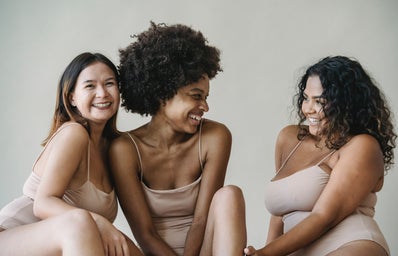It’s been a long time coming, but I’m slowly coming to terms with my cultural identity. I’m mixed (Filipina and white) and throughout my life, being mixed has been a struggle for me. Growing up was a rollercoaster of emotions about my identity: confusion about which side I belonged in, hatred for one side or both sides, sadness for the personal loss of my connection to Filipino culture, and more recently, finding acceptance in who I am.
I’ve had my fair share of bad experiences with “exposing” myself as mixed. I’m white-passing, so saying I am Asian or Filipina was controversial in itself. “Really? I couldn’t tell,” ”You’re not Asian,” or “The Philippines isn’t even in Asia” (which is a totally different tangent I could go on about) are just a few of the phrases I’ve heard over the years. Additionally, I’ve heard all the jokes, especially the ones about mixed people having to insert their ethnicity in every conversation they have.
Racial imposter syndrome consumed my life. This idea explains the feeling many mixed people have about their identity: a feeling of self-doubt or fakeness relating to identifying with their multiple races. For me and many others, it accumulates into an often daily, self-consuming thought about not knowing who we truly are. Throughout my life, I’ve felt like I couldn’t entirely identify with either side, and that I could fit in with those around me.
Stories from my Filipina mother about my identity didn’t seem to help either. Hearing her experiences with racism in the U.S. and her reluctance to teach me Tagalog, because of the fear that I could experience the same racist interactions she did or develop an accent, tore me apart inside. I constantly felt like my culture was ripped away from me. Any attempt I tried to reconcile with this and learn more about my culture never felt like enough, because after all, if this was my culture, why didn’t I already know about certain cultural aspects?
It’s taken me years, but I think I’ve finally come to accept my identity.
Hyper-focusing on the complexities of my cultural identity or having to explain myself to everyone I meet isn’t going to bring me happiness. Instead, accepting both sides of my identity and understanding the in-depth experiences of my culture are what will inevitably bring me peace.
It isn’t going to be an overnight transformation from knowing barely anything about my culture to being an expert. It’s going to take time, persistence and devotion to absorb as much about my culture as I can. So, that’s what I’ve been doing.
I recently joined Kababayban (aka Kaba), the Filipino club at UCI. I have learned so much valuable information about my culture that I never had the chance to experience before. Growing up in a predominantly Vietnamese and Hispanic area, Filipinos were seemingly non-existent, and if there were Filipinos at my school, they were rarities and often mixed like me. The Filipino culture in my own household was virtually nonexistent, and although I’ve visited the Philippines three times, I’ve always felt left out — out of the conversations, out of the references, out of the country, and out of the culture.
The club events, meetings and conversations with people about our shared experiences have often brought me close to tears. It is so validating and affirming to hear about your culture and to hear about personal experiences you never knew other people had.
Recently, I went to a club event at the Historic Filipinotown in Los Angeles. It was my first time exploring the area, and just the sight of murals and monuments that included Filipino cultural aspects was so exciting. Myself and other Kaba members visited the Unidad Park in Historic Filipinotown, an area with a massive mural of historic Filipino American figures. There was an event celebrating Larry Itliong, a Filipino American labor organizer, at the park where several booths, a stage, and even a “jeepney” (a certain style of jeeps that dominate Filipino culture and are used as means of transportation in the Philippines) was set up.
It was so refreshing to see cultural dances and chants like the “Isang Bagsak” clap, which translates to “One Fall”. It was used by laborers in the fields symbolizing that when one falls, we all fall and when one rises, we all rise. Listening to my culture’s songs and spoken poetry about our experiences brought upon a sense of pride for my identity. Seeing everyone around us enjoying the atmosphere of Filipinos celebrating their culture was something I’ve never been exposed to before, and it was amazing.
If you’re mixed, or even if you feel a sense of disconnection to your cultural identity, I encourage you to do research on your culture. Join a cultural organization like I did and talk to people with similar backgrounds. Doing so might make you feel accepted and seen for who you are. It won’t be an easy or quick journey, but I promise you, it will be worth it.


